Race

As an Asian-American activist, I must constantly negotiate what it means to be a woman faith leader – all while challenging misconceptions of the “model minority myth” and the “otherization” of my identity in a dominant culture that often sees anything other than whiteness as foreign, exotic, or suspect. And yet, I know that my experiences do not pale in comparison to the hardships of those experienced within the greater sisterhood.

Black people’s humanity is still at question in the stories so many of us hear and tell in America. For many with a badge, a gun, and the legal shield of the state, black men and women — even black children — are not humans. Instead black bodies are threats and targets for rage, fear, and racially justified execution. When an officer of the law exterminates on the spot, we must ask ourselves what he was shooting. In his mind, Tamir could not have been a boy. He could not have been human. What did he see? And who bewitched him (and us) to “see things” when we are entirely sober?

Even though the Great Recession officially ended in 2009, 72 percent of Americans believe that the U.S. is still in recession, a figure unchanged from 2014. While that figure has remained steady, this year has seen a dramatic spike of discontent regarding economic inequality. Over the past four years, only slight majorities (53 to 55 percent) have agreed that “One of the big problems in this country is that we don’t give everyone an equal chance in life.” But in 2015, 65 percent of Americans agreed.
And Republicans and Democrats overwhelmingly agree, at least on this: The federal government is looking out for the rich. The American Dream, seemingly in question since the Great Recession, is now only an idle daydream for most.
And as Americans give up on the American Dream, they grow more suspicious of immigrants. In 2012, 57 percent of Americans believed that immigrants strengthened the U.S. That number has now, dangerously, fallen below a majority, to 46 percent. And it has gotten personal — more people report being bothered when they encounter non-English speakers.
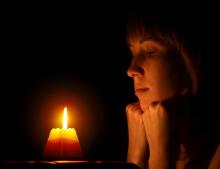
1. Don’t assume racial inequality is normal . This shouldn’t be an easy mistake, but it is one of the most common and most consequential mistakes when thinking about racial inequality. The largely absent social and political urgency over racial injustices makes it clear that many have concluded deep and persistent racial inequality is normal, unsurprising, and not a social emergency.
Yet, how can one see racial injustice if racial inequalities are “supposed” to be as they are? How can our children believe us when we say skin color is irrelevant to one’s abilities if we accept as normal the racial inequality present in all areas of modern life, and teach them to do the same? How can black people as a group not be stigmatized if massive inequality is the expected reality?
When racial inequality is perceived to be normal, then it is obvious that an old, ugly rationale — that black people “get what they deserve” — is alive and well.
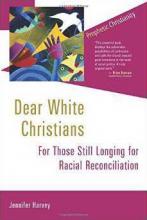
A white scholar touring churches across the nation is trying to convince Christians that racial reconciliation is not enough — it’s time to start talking about reparations for descendants of slaves.
And among mostly white, mainline Protestants this controversial — some would say unrealistic — notion is getting a hearing.
What divides the races in America, says Drake University ethicist Jennifer Harvey, is not the failure to embrace differences but the failure of white Americans to repent and repair the sins of the past.
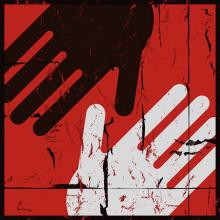
#BLACKLIVESMATTER is being touted as our uniquely contemporary civil rights movement. Yet it bears striking resemblance to the black power movement of decades past.
Who can represent #BlackLivesMatter, be involved, or be its leaders? It’s clear that black people can. Can others? And what sorts of black folks? Ben Carson? Cornel West? Two of the three co-founders are queer black women. And what about the role of the faith community, of clergy? The movement’s incredible racial justice work notwithstanding, it puts on display the identity politics that continue to complicate the body politic in contemporary American life.
Jennifer Harvey’s Dear White Christians: For Those Still Longing for Racial Reconciliation (Eerdmans) is one of the most significant recent books addressing identity and politics, focusing on the intersections of race, anti-racism, and religion. In its pages, Harvey, an American Baptist minister and associate professor of religion at Drake University, deconstructs reconciliation as a paradigm and offers a constructive practical vision of reparations. Harvey’s work in trying to make sense of her own embodied white identity—through her studies at Union Theological Seminary and service in a host of ministry settings addressing racial justice—provides background that allows her to explore multiple racial justice issues, making her book relevant for an intercultural audience.
Harvey’s thesis is clear: Reconciliation as a paradigm has failed to address racial injustice in the U.S., and the church needs to shift to a reparations paradigm to better address our racial situation. In a reconciliation paradigm, racial separation denotes racism, making diversity and togetherness the primary criteria for determining racial righteousness in the church. Issues related to structural justice are significant within visions of reconciliation, but they take a back seat to the ultimate concern of inclusion.

In 1851, attendees of a feminist convention gathered in a packed hall in Akron, Ohio. It was a time when — even in the midst of a fight for women’s rights — mostly men spoke. They talked of dainty women — delicate and deserving of special protection.
Sojourner Truth sat in their midst. Miss Truth sat quiet, listening to men fill space with empty arguments about why women should or should not have the vote. Finally, she rose to speak and a visceral wall of hostility rose from the masses to greet her. The voice of this "n___ger woman" could muddy the message, they hissed. It could conflate the movement for women’s equality with the abolitionist movement — and that would be the death of suffrage, they feared.
But, as Dr. King liked to quote, “Truth crushed to earth will rise again.”
1. Can the Evangelical Left Rise Again?
“The Evangelical left, once a substantial contingent of American life, is now seemingly small and powerless compared to its rightwing counterpart.”
2. Why Every Church Needs a Drag Queen
Nadia Bolz-Weber, everyone’s favorite tattoo-sporting, grace-spouting priest, is back with a new book, Accidental Saints.
3. One Novel Way to Bring Healthcare to Poor Neighborhoods
A local neighborhood health center believes it has developed an approach that works for their clients in poverty — partnering with a local grocery story to combine the shopping and medical experience into one outing.
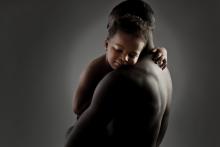
Even in its bitter moments, Between the World and Me remains a parental love letter. As such, we are drawn to words that at once familiar and intimate, revealing the hopes and vulnerability of a father who, like me, feels such pressing need to save his child from and through his own history.
"The truth is that I owe you everything I have," Coates tells his son tenderly.
"I was grounded and domesticated by the plain fact that should I go down, I would not go down alone."
To read Coates is to consider just how dramatically different my own parenting imperative is from fathers who teach their sons resistance but who must contend with the possibility, indeed the likelihood, that such instruction will lead to bodily loss.
For those of us who grew up believing we are white, and perhaps especially for those of us raising sons all too likely to believe the same, there is at least one urgent message we should share alongside Coates: Our children need to know that they live in a nation, branded by violence, that values some bodies more than others.
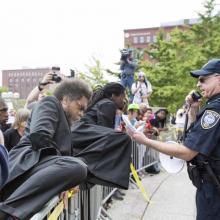
The latest killing happened two days before the 1-year anniversary of Michael Brown’s death when Christian Taylor, 19, crashed his SUV through the window of a car dealership in Arlington, Texas. Officers shot him in the course of a struggle. In fact, as I write this, there have been 601 lethal police shootings in 2015, 24 of them unarmed black men, according to an ongoing independent analysis by Washington Post: That’s an average of two unarmed black men shot dead by cops per month since January. This number does not include police shootings of black women, police killings that did not involve gunfire, or deaths while in police custody. Freddie Gray’s and Sandra Bland’s deaths are not included in the Washington Post tally.
Over the course of the year since Michael Brown died, we have learned critical lessons that have fueled the movement, bringing together young activists, clergy, and evangelicals in unlikely, yet cohesive alliance.
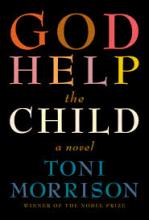
“WHAT YOU do to children matters. And they may never forget.”
This thread runs aggressively through Toni Morrison’s most recent novel, God Help the Child. The speaker is Sweetness, a woman who shares her family’s wounds from trying to pass for white, or “high-yellow,” for generations. Of trying to blend in well enough to drink at fountains, to try on hats in stores, to use the same Bible as whites during ceremonies. When her child and the novel’s focus, Bride, is born black, “midnight black, Sudanese black ... blue-black,” all the advancement Sweetness and her ancestors strove for dies. She loses her husband (who assumes she has been unfaithful), her social standing as a light-skinned woman, and any love for her child. “Her color is a cross she will always carry,” Sweetness says. “But it’s not my fault. It’s not my fault. It’s not my fault. It’s not.”
Bride grows up without the love of a mother’s touch and scorned for being so oddly dark, until she learns to use her color to make herself exotic and marketable. What may seem to be a character living into her identity as a black woman is really a façade in order to regain what was lost because of her skin. Of course, what Bride sees as progress is actually proof that she too has fallen into Sweetness’ obsession with what Morrison described in a recent NPR interview as “skin privilege—the ranking of color in terms of its closeness to white people or white-skinned people and its devaluation according to how dark one is and the impact that has on people who are dedicated to the privileges of certain levels of skin color.” But while race and color as social constructs are themes in the book, they are not explored as deeply or given as much emphasis as childhood trauma.
As in some of Morrison’s other novels, magical realism conveys the battle between the past and the present, the spiritual and the physical, playing a poignant, visceral part in Bride’s journey. Bride goes through a literal metamorphosis, assuming it is penance for gruesome choices she made as a child to feel alive and as an adult to feel powerful. She is numbed to what true progress and success are, constantly trying to put a fragmented identity together until she can no longer get up and must face her trauma and changing body.
The only people in the novel who allow themselves to truly heal are a child named Rain and an ex-convict named Sofia. They speak to the power of self-forgiveness. Too often we carry the shame and hate handed to us by other people’s evil, whether from childhood trauma and abuse or complacency and apathy as adults. While we can and must be held accountable for our own mistakes, we must also be willing to take off the shroud of self-loathing and guilt, and move forward past trauma into self-acceptance and healing. Both Rain and Sofia, young and old, can see the power of blame and regret and refuse to walk that path, while Bride, her lover Booker, and her mother Sweetness will arguably always drag the sins of their forebears behind them.
“What you do to children matters. And they may never forget.”
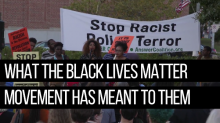
Sunday marked the 1-year anniversary of the killing of Michael Brown in Ferguson, Mo. Both in Ferguson, and across the country, the memorials and marches were held to remember those lost to police violence. Here in Washington, D.C., we attended one such demonstration and asked protesters what the #BlackLivesMatter movement has meant to them over the past year.

EVEN AS SOUTHERN states—and GOP candidates—jumped through hoops to distance themselves from the Confederate flag, a backlash erupted among those claiming the flag was merely a symbol of “heritage.” Battle-flag waving Southerners (and Confederacy sympathizers) seemed to leap at the opportunity to wave their banner high.
But what about the rest of us? One of the most profound statements I’ve heard recently came from Rev. Jin Kim, founding pastor of Church of All Nations in Minnesota. This Korean-born pastor stood at the podium of the Sojourners Summit and said with conviction: “I am a white supremacist.”
How can this man, a person of color who’s dedicated his life to ethnic and cultural reconciliation, be a white supremacist? The same way any of us can. After all, at its heart white supremacy is not about white hoods, battle flags, and burning crosses. Those symbols are what we call explicit bias. People know when they are practicing it.
But most often white supremacy is about implicit bias that favors whiteness. It’s about the unconscious associations we make in our minds before we even know we’ve done it. White? Rich. Black? Poor. White? Good. Black? Bad. White? Trustworthy. Black? Scary. You get the idea.
These are the unconscious biases that shape the way we order our lives; the communities we live in, the places we shop, the churches we attend, the leadership from others we accept (or reject), and the policies we support (or don’t).
It’s not hard to fume at the thought of the killer of Mother Emanuel’s Nine. And it feels good to click “like” and share posts calling for the removal of Confederate flags.
But if we stop there, bias beats us. It is the unconscious biases of the masses that keep us from moving forward, not the explicit biases of the few. So, check out this tongue-in-cheek list of four easy ways to be a white supremacist (regardless of your own race).
1. Plan a conference on church planting with a speaker lineup so white it would make Honey Boo Boo blush. And if you want to increase your “diversity,” have one speaker of color (even if he is from India), an Asian emcee, and maybe a black worship leader.
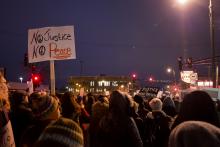
It's a call and response chant started on the streets of Ferguson that has spread across the nation.
"Mike Brown means ..."
"... we got to fight back!"
It rolls off my tongue in a sing-chant cadence, and my hips begin to sway, because I have yelled it as I've marched and rehearsed it in my dreams. It is bitter and sweet. We evoke Mike's name and sway and pledge to fight. I've listened to voices I know and those I don't call and answer in hours of live stream and together in front of court houses and I know, I know in my soul what Mike Brown means.
Mike Brown means ... something more. Something larger than one more young black man shot in his neighborhood.
One year later, Mike Brown means ... something more.
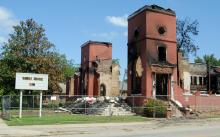
AS I RECENTLY recalled that summer of 1964, I was reminded that slavery was our original sin. Race remains our unresolved dilemma, and today the bombers are back. From an urban church in Knoxville, Tenn., to countless rural churches in South Carolina, Virginia, ... and Alabama, the flames of arson and the hatreds of racism burn again.
On the narrow subject of burning churches, there has been rare bipartisan outrage. Conservative Rep. Sen. Lauch Faircloth of North Carolina said on the Senate floor, “If we in Congress cannot agree that church burning is a despicable crime, what can we agree on? It’s not a matter of liberals, conservatives, blacks, whites; it is about justice, faith, right, wrong.” He and Sen. Ted Kennedy introduced a bill to toughen the laws against church arson.
Well-meaning whites have also stepped forward to help rebuild churches. The National Council of Churches and the Anti-Defamation League have established national rebuilding funds.

AS WE APPROACH A PRESIDENTIAL election in which each candidate’s gender is sure to be discussed, it’s worth evaluating the automatic assumptions we—yes, all of us—make when it comes to women, men, and the meaning we attribute to gender. These assumptions include everything from outright sexism to subtler forms of gender bias, such as the knee-jerk association of men with “competence” and “gravitas,” women with “incompetence” and “emotion.”
“The battle for women to be treated like human beings with rights to life, liberty, and the pursuit of involvement in cultural and political arenas continues, and it is sometimes a pretty grim battle,” writes Rebecca Solnit in the title chapter of Men Explain Things to Me, a 2014 collection of essays that helped coin the term “mansplain.” “This is a struggle that takes place in war-torn nations, but also in the bedroom, the dining room, the classroom, the workplace, and the streets.”
I would add, of course, that this battle also takes place in the church, our spiritual homes. After all, for women this is a struggle that’s older than feminism, perhaps as old as our faith traditions themselves. So how, exactly, can we end the battle?
The answer, it seems, lies in understanding the difference between explicit and implicit bias, the former resulting from deliberate stereotypes, the latter a growing topic in social science that doesn’t absolve us of guilt but helps us understand how biases of all kinds have been so difficult to identify, name, and change.
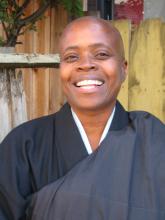
When Zenju Earthlyn Manuel goes to teach somewhere for the first time, she often sees surprise in the faces of the students as she is introduced.
She doesn’t look like many of them expect. She isn’t Asian. She isn’t a man. And she isn’t white.
And getting them to acknowledge that her body — her “manifestation,” as she calls it — is different and a part of her experience is crucial to her teaching. If our bodies are sources of suffering, then we ignore them at our peril.
“When I have held and embraced who I am, how I am embodied, it has become a source of enlightenment, of freedom,” she said from a sunny corner window seat in her living room. Draped in a black monk’s jacket, she is a stark contrast to the white walls and white upholstery of the rest of the room.

As we mark the 70th anniversary of the atomic bombings of Hiroshima and Nagasaki, the world waits to see if the Iran deal will come to fruition and thus avoid war. Once again, the debate about nuclear weapons appears at the forefront. At the same time, inside the U.S., the #BlackLivesMatter movement continues to make clear it will no longer be politics as usual as activists organize, protest, and fight every day to destroy institutional racism. However, it is no coincidence that these events are all happening simultaneously as they have always been and continue to be inextricably linked.
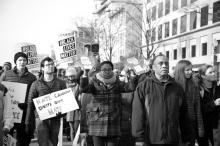
In the wake of Sandra Bland’s death, I’ve seen comments from other white Christians on social media defending the arresting officer, denying that Sandra Bland was mistreated, blaming her for what happened, and denying that race had anything to do with what happened to her. Their responses were so knee-jerk automatic that I probably could have written them ahead of time before learning anything specific about the events in question. We humans can be quite tribal, and we instinctively tend to identify with the people who are most like us.
Many whites balk at the suggestion that their views and assumptions might be racist because they know themselves to be moral people who live decent lives and maybe even have some black friends. They certainly don’t hate anybody, and they aren’t supporters of the Ku Klux Klan. Because they understand racism on an individual rather than systemic level, it seems impossible to hold together an image of oneself that contains both “good person” and “racist.”
